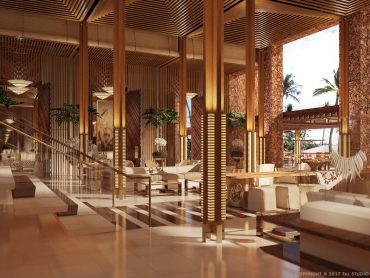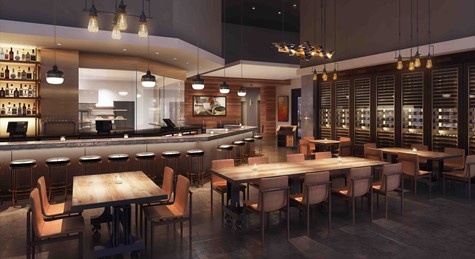Balance Sheet Woes in Ten Parts
Through over 30 years of working with both independent and franchise-branded properties, I have regularly heard the phrase, “Ownership is disappointed with the results.” This opens a further discussion as to why top or bottom line financial data is not living up to the plan, which usually then leads to spending cuts in a mad dash to restore the P&L to some sort of fiscal profitability.
But why does this have to happen? In the packaged goods business, my vocation prior to entering the hospitality world, cutting expenses was rarely considered a primary solution to a brand’s challenges. Rather, management first focused on trying to understand why business was subpar by reviewing competition, pricing, distribution, promotions, advertising and even product enhancements. Often, the solution was to spend more, rather than simply cut and run.
Oftentimes, you have to read the ‘note behind the note’ to fully understand how best to proceed. Accordingly, here are my Top Ten reasons why owners are often disappointed with their property’s business results.
1. Unrealistic financial expectations. “How’s business?” When asked this, how many times do you hear an answer that addresses a negative spread versus budget, but with strong performance over year ago figures? I usually respond to this with something to the effect of, “So, what’s the problem?” Fact is that rather than celebrate the success and learn from the results, management is depressed as they are below this supposedly critical budget expectation, and are, in effect, failing.
Dig deeper. Why was the budget set to that level? Was there some sort of magical revenue or bottom line profit target that had to be achieved? And was the number properly substantiated, rather than just a ‘whim’ or ‘stretch’ to achieve some sort of milestone?
2. Failure to link spending with occupancy. Any hotelier who does not believe that sales and marketing efforts directly correlate with occupancy is either unrealistic or simply naïve. Yet, often in budget development meetings, I’ve seen a 1-2 percentage point increase in occupancies – to pad resultant revenues – with zero increase in any sort of support program to match. In an era where our KPIs are so quantifiable, it seems incredulous that management authorizes and condones such behaviour. Occupancy points can’t just be pulled out of thin air!
As a result of these increases to budget, false expectations are set. As another way of thinking about this, markets typically rise and decline in a smooth progression (just follow trended STR data). Increasing your occupancy implies that it has to come from somewhere. If the market is not growing substantially, that means it is coming from competitors. This indeed requires a marketing or sales effort.
3. Cutting into maintenance to meet operational bottom line. Think guestroom soft goods can last another year or two without replacement? Towels not fraying too badly? Maybe you can cut one person from engineering or your landscaping staff? Trimming budgets for maintenance, soft goods replacement and other property investments all represent erroneous approaches to hospitality management.
Little by little, the cost savings are noticeable, first to staff, and then to guests. It’s a slippery slope. Once you start cutting corners, any increase in maintenance shows a variance versus the previous year, making it difficult to reverse the decline. TripAdvisor comments often provide valuable, qualitative clues to the demise.
4. Weak senior team hiring procedures. A hotel operates on service. Service is based upon a solid management team. These teams are not static; a degree of turnover is inevitable. Clearly new team members need to be hired.
Solid hiring procedure typically starts with digging deep to find the best candidates. Once a potential candidate is found, time has to be invested to conduct team interviews, ideally with the candidate spending a full day in and out of the various departments. References must be checked in detail. It takes time, effort and competitive salary packages. After all, anyone who is great deserves to be paid accordingly. Sure, there are many who are fairly adept at hiring the best and it is clearly demonstrated in their business performance. Skipping any step in the process generally leads to failure.
5. Funding too much debt. Hotels are not banking machines. Hotel management should not need to focus their efforts on trying to cover inordinate interest payments out of cash flow. In doing so, decision-making and expenditure plans are often compromised.
Servicing debt is an understandable business expenditure. But debt financing is the owners responsibility, not the hotel managers. Accordingly, servicing excess debt is an ownership issue, not a property operations issue. Property management should not worry about anything post EBITDA on the financial statements.
6. Ignoring market conditions. No hotel operates in a vacuum. Business is influenced by such factors as economic growth, exchange rate fluctuations, and regional government changes. In addition, competitive hotel activity and new property openings impact the marketplace. The best business plans can never fully predict all of these elements.
But good plans provide a conservative cushion, right? Remember this important rule, pricing is market driven, not property driven.
7. Relying on OTAs for a greater and greater portion of revenue. Everyone knows that Expedia, Priceline and their cadre of brand sites deliver volume. But at what cost?
Commissions paid dig directly into the bottom line. It’s a vicious circle: the more OTA volume you gain, the less funds you have to support business on your own. Where does it stop? True, OTAs help offload excess inventory and are great for finding trial customers, but at some point you must make a big push for direct bookings.
8. Ignoring technology. You would surprised at how many hoteliers still don’t recognize that mobile devices are an imperative. Just look at Apple share prices. Those valuations did not come from computers; they are based upon iPhone sales.
But technology goes beyond mobile. We are in the midst of a revolution with many new and ingenious ways to enhance both productivity and performance through technological advancement. If you’ve missed the annual HiTec tradeshow for more than a couple of years (or if you have never attended), you owe it to yourself to tour the exhibits and investigate the myriad of technological advantages available for your property.
9. Forgetting that marketing is more than just digital. Sure, SEO programs, Google Adwords, re-targeting and social media are critical. But true marketing is a multi-faceted affair. Public relations, trade shows, travel agents programs, local community activities, sponsorships, CRM and traditional advertising can all play an important part in growing awareness and business development. Too many hoteliers believe that all solutions to their problems will be solved by simply building a new website. This is valuable but only the starting point, though, and much more is needed!
10. Ownership’s failure to clearly communicate goals. An owner’s responsibility is to clearly define what is important, both in the long-term and in the short-term. Most asset managers and general managers are capable of achieving the goals that are established for them. However, if these senior decision makers do not have a crystal clear idea of what the owner’s vision is, then the ensuing results rarely deliver.
(Article by Larry Mogelonsky, published in Hotel News Now on May 13, 2016)




